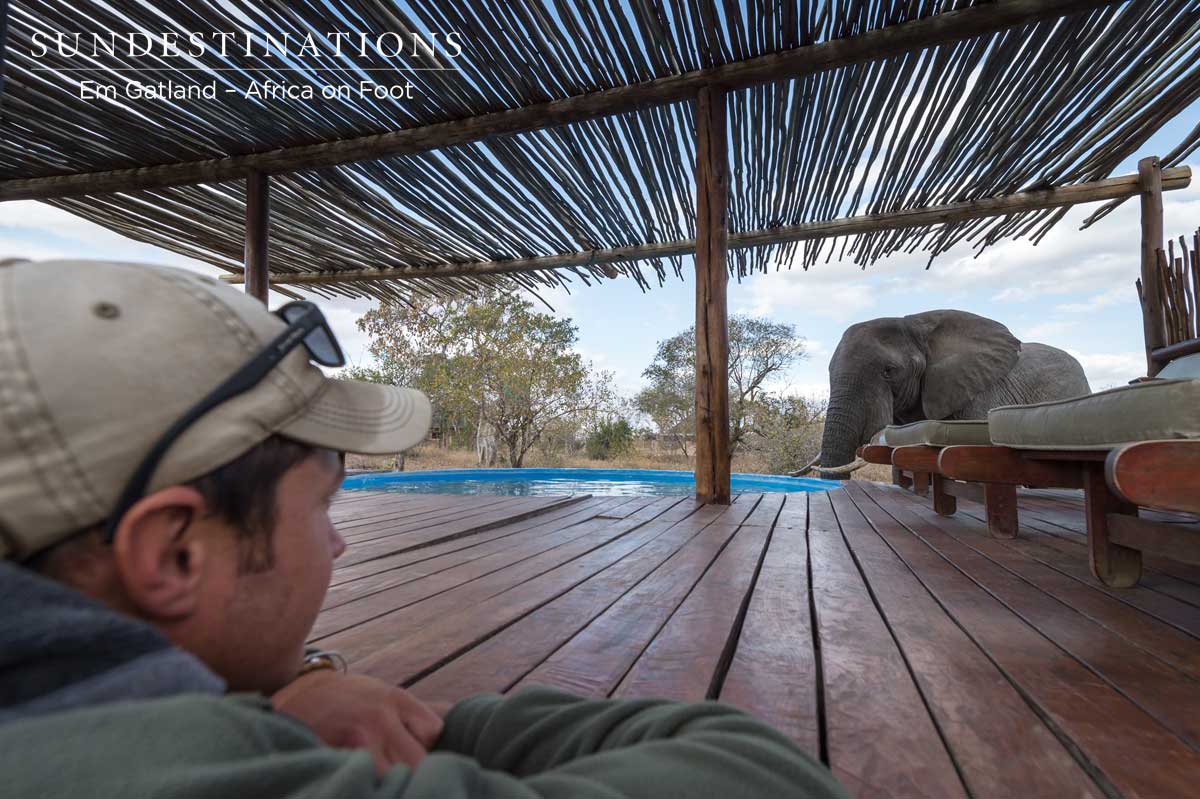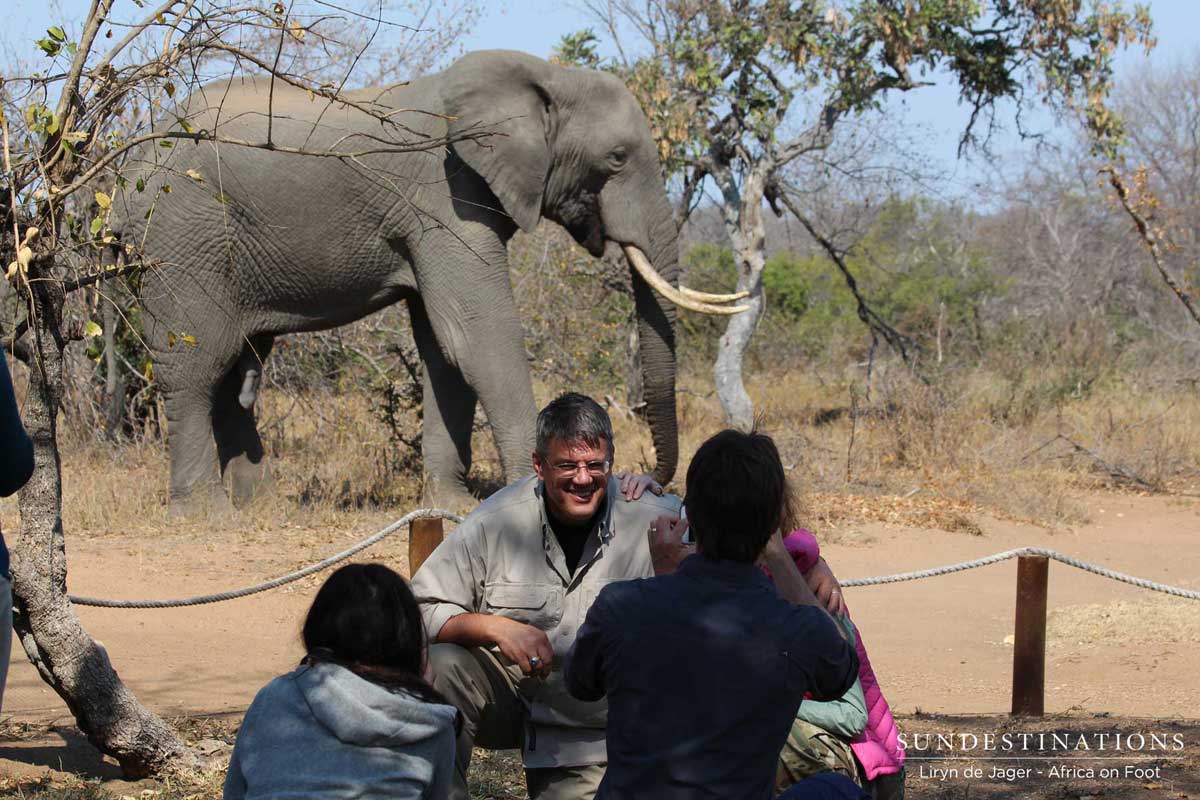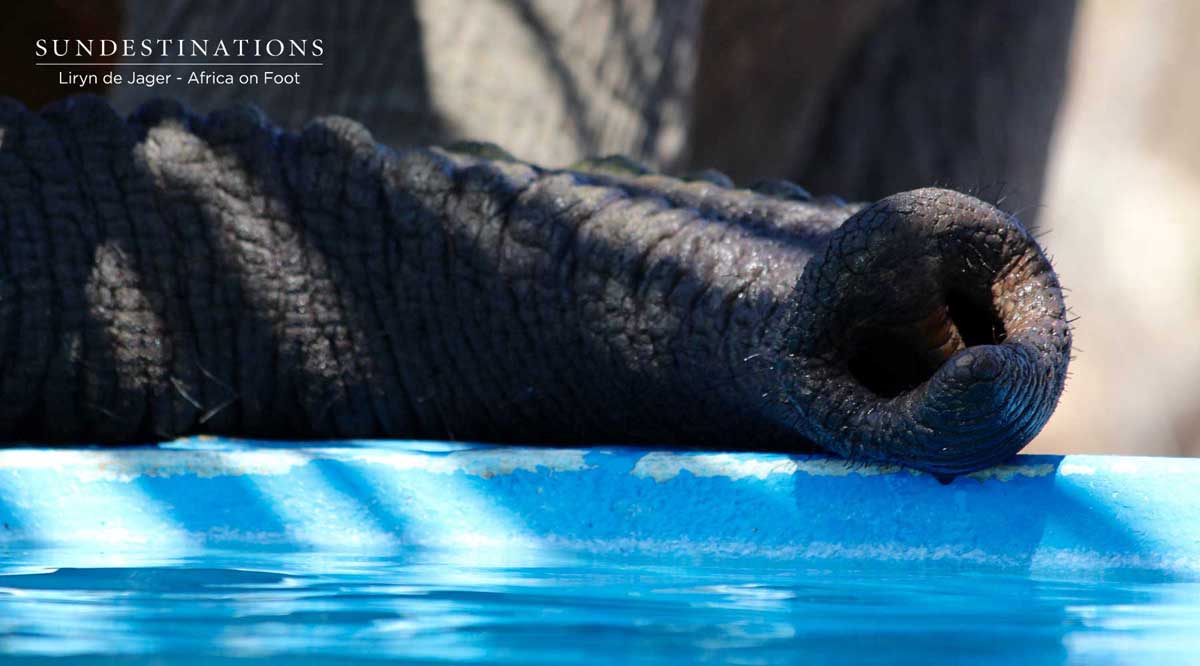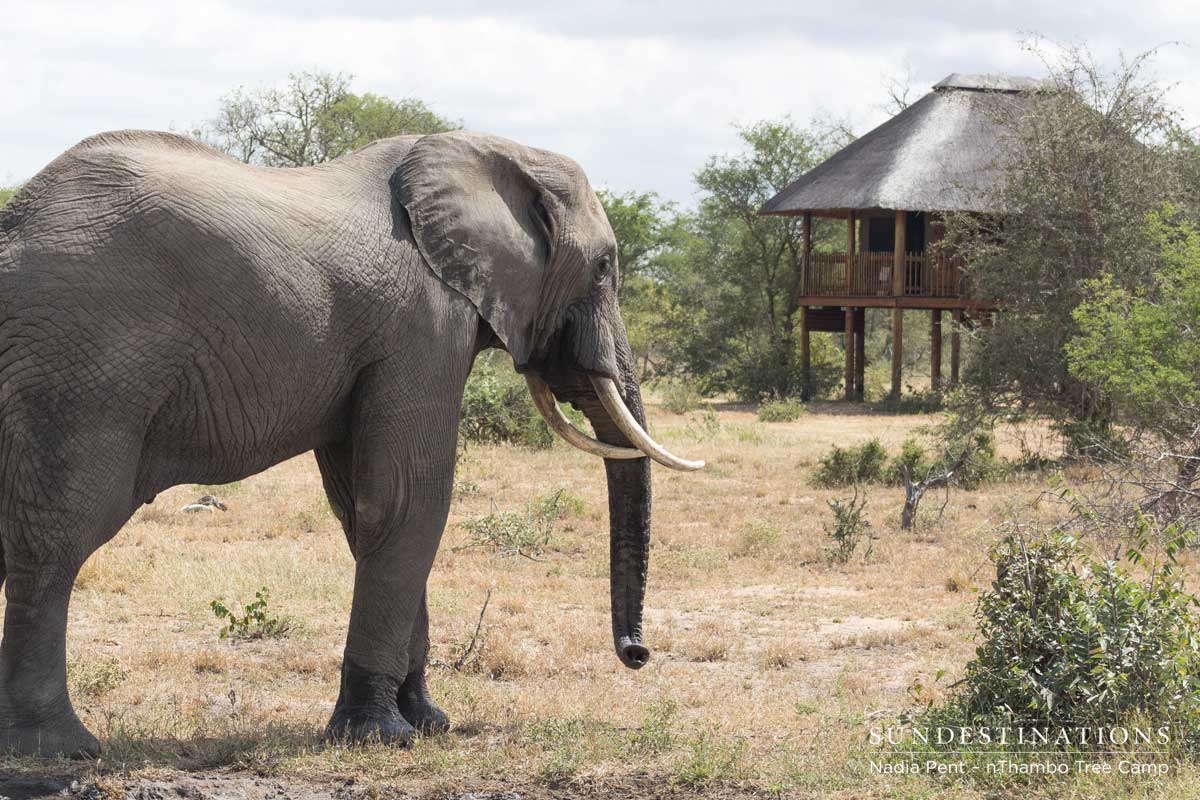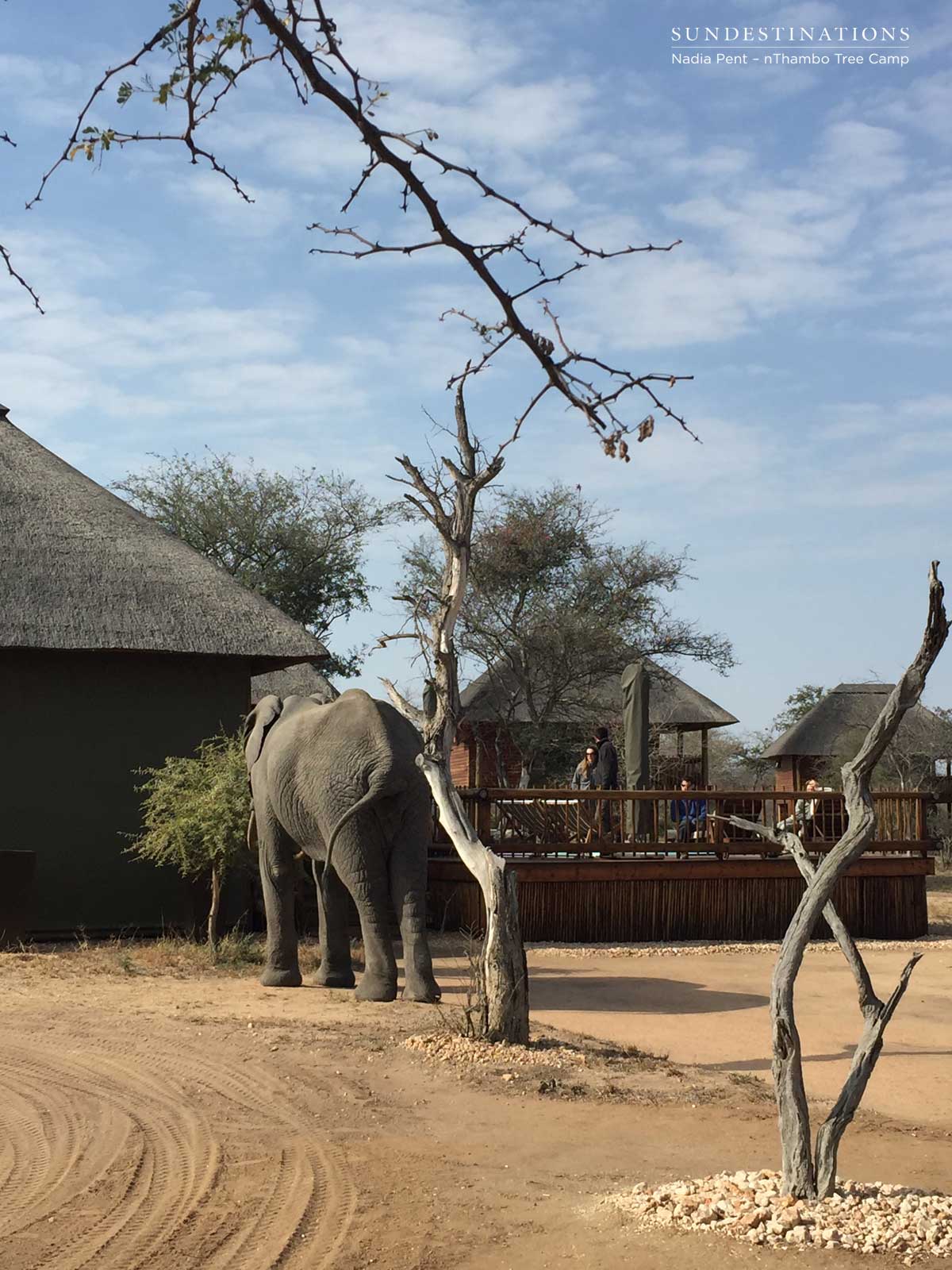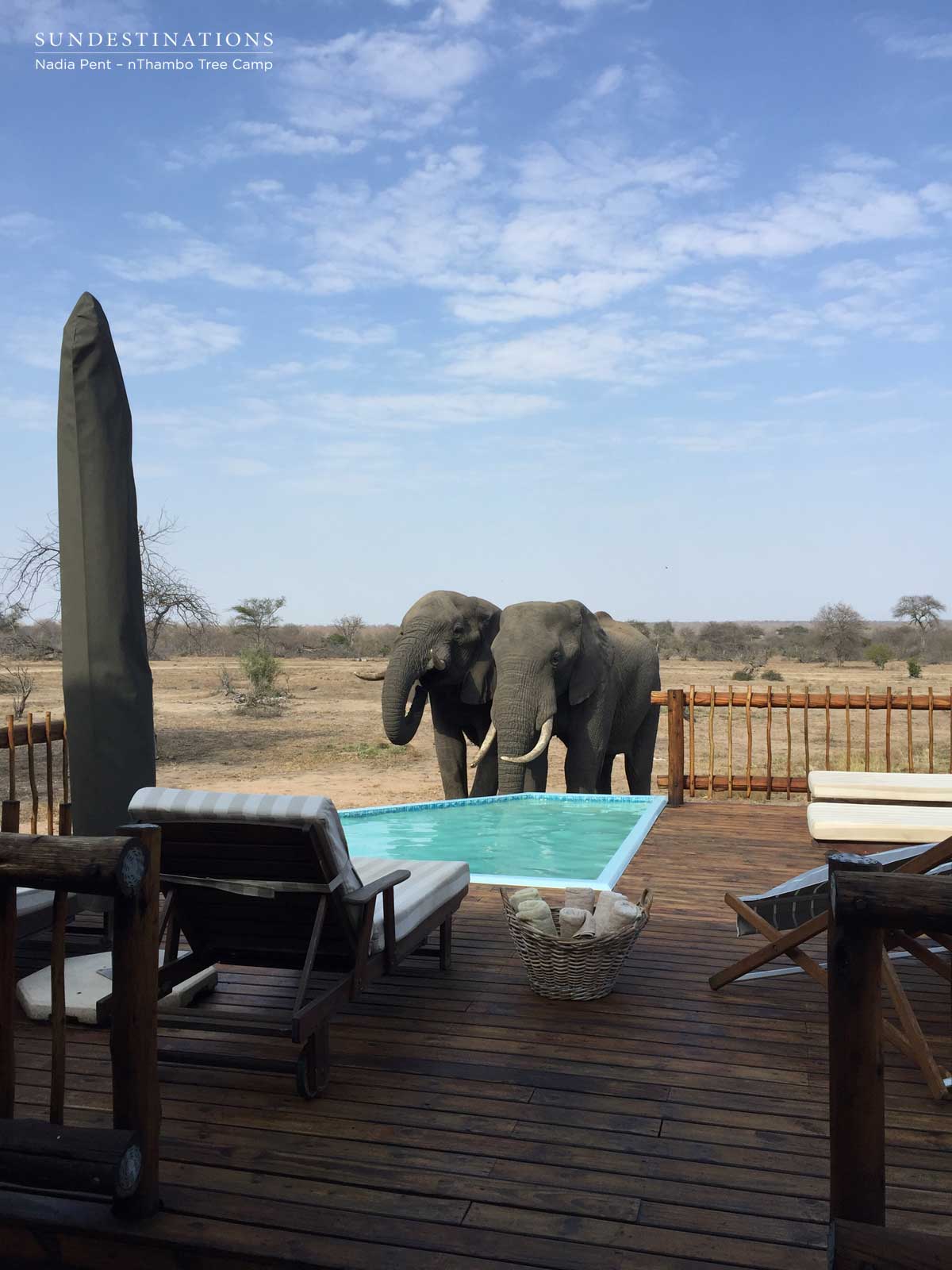The winter is in full swing, which means the bushveld is crunchy, arid and no longer boasts the luscious green vegetation that summer brings. With the thinning out of the bushveld, the water sources become scarce. For plains game, they gain most of their moisture from the vegetation they digest so they will congregate at waterholes dotted in reserves to replenish their thirst. Elephants are our swimmers and water babies of the bushveld, so they’re naturally drawn to pristine, fresh waterholes. When the waterholes dry up a bit, elephants will travel far and wide to find clean sources of water. The swimming pools at nThambo Tree Camp and Africa on Foot appear to be their go-to destinations for a soak and slurp!
Elephants Drinking from the Pool at nThambo Tree Camp
Around the same time, on an almost daily basis, the elephants meander their way through the wooden treehouse units and straight towards the splash pool. There’s normally quite a jostle to get a place in the pecking order and guests delight in watching the young calves flaying their trunks over the side of the pool. Elephants have the capacity to soak up to 14 litres of water through their trunks and can drink up to 200 litres of water a day.
Given that they digest a bulk load of coarse vegetation, access to water is vital and herds will travel many miles to seek out the perfect water source. Possessing a high emotional intelligence and excellent memory, these pachyderms will make a point of remembering where valuable water can be obtained – the pool at nThambo is clearly etched into their memory banks and its water source can be detected from up to 5 km away. Our pachyderms can naturally go without water for up to 4 days and if they don’t have access to waterholes and swimming pools, they will use their trunks to dig up the earth to access to ground level water. This has a knock-on effect for other animals because natural waterholes are created through this digging process.
Elephants Drinking from the Pool at Africa on Foot
There is a bull elephant that is a well-known visitor to the splash pool. He seems unperturbed by the presence of onlookers and loves to relax at the poolside. He has a routine, which is observed by curious onlookers on a daily basis. This bull casually consumes his intake of vegetation while en route to his local. Elephants can spend up to 12-18 hours a day feeding and digesting a variety of course vegetation, which means they need to drink plenty of water.
Guides and rangers at both camps prioritise the safety of guests and would never put a guest in harms way. At all times when guests were viewing the elephant, there is a ranger present.
Best time to watch elephants at the camps’ swimming pools? During the winter when there’s minimal access to natural water sources!


